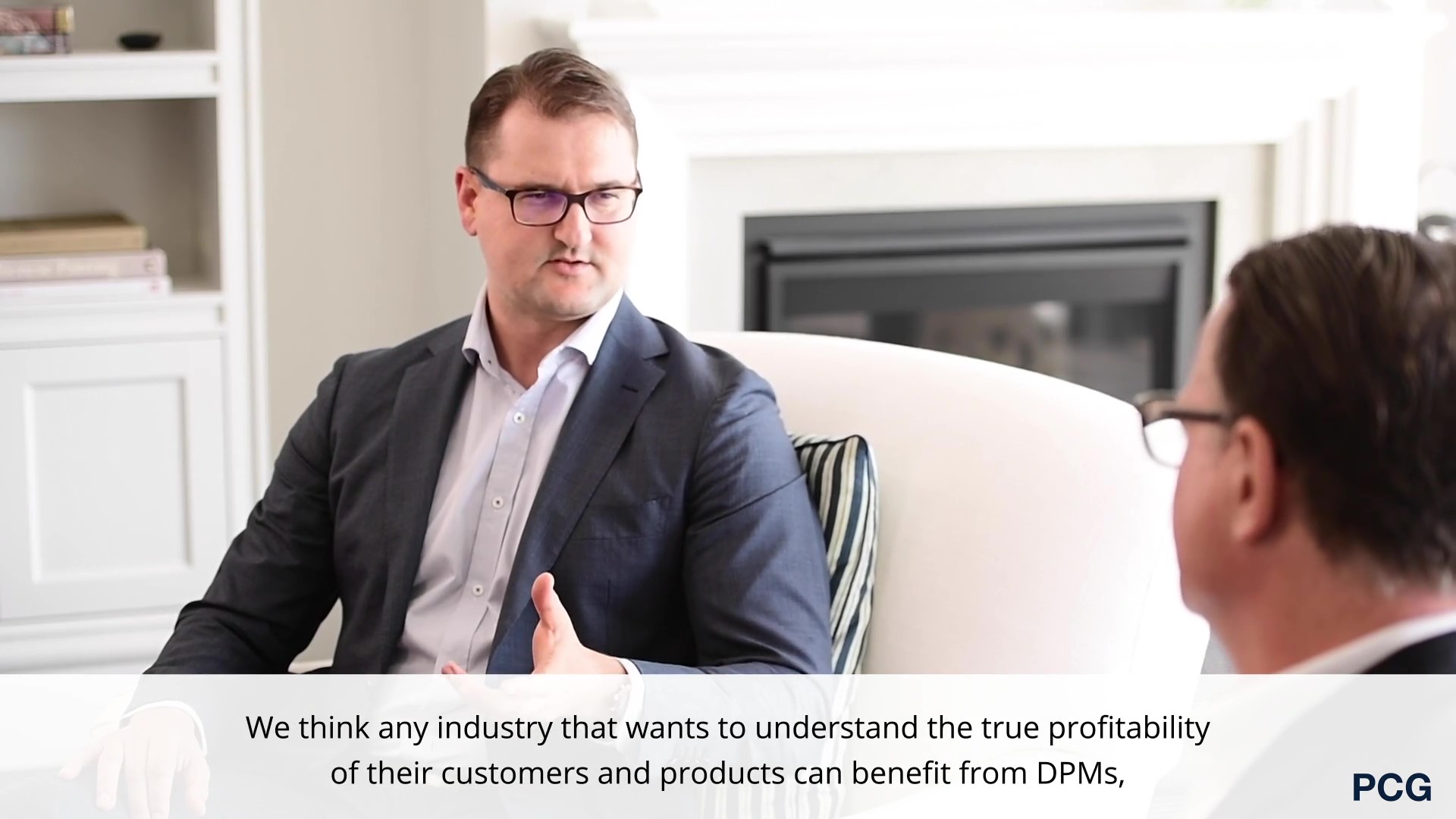
PCG Founder John Stathis interviews Managing Partner Christopher Kernahan and learn how DPMs can help businesses identify the true profitability of their customers and products.
Watch the video or read the transcript below.
Transcript
John: Hi, I’m John Stathis, the founder of Pacific Consulting Group. I’m here today with Christopher Kernahan, the Managing Partner. Welcome Chris.
Chris: Thank you John.
John: We’re here to talk about dimensional profitability modelling and how we use it to drive initiatives and results across our client base. Chris, why don’t you start off by telling us what is a dimensional profit model?
Chris: We look at dimensional profitability models as the modern equivalent to activity based costing models. But, whereas in the past they were heavily manual, surveys and interviews, in order to generate that data. Today, we have the benefit of operational equipment, the internet of things, where all of these assets are producing information. Whether they’re vehicles, sites, stores, forklifts and we’re leveraging that data, combining it with our customer and financial information to give us a granular insight into profitability, across customers, products, geographies, whichever dimension we need.
John: Chris, why do our clients need the DPM and what are the benefits they can extract from it?
Chris: Let’s say you’re a hairdresser, you’ve only got two clients. Client A comes in and they just want a simple haircut. They’re in and out in 30 minutes. Client B, they want a cut, they want a colour, they want a wash, a shampoo or massage, they want a nice chair, premium products to put in their hair. Those extra costs, if you don’t identify them, you won’t know where your profit is coming from and you won’t know which of your customers are profitable and unprofitable. And that’s what the DPM does.
John: So it gives you a granular understanding of cross subsidization, across different dimensions of the business.
Chris: Exactly.
John: Which industries benefit the most from a DPM?
Chris: We think any industry that wants to understand the true profitability of their customers and products can benefit from DPMs, but we’ve seen particular effectiveness in businesses that are price makers, whether that’s consumer goods and retail, financial services. Also in freight and logistics, and even heavy industrials, that both produce and distribute their own products.
John: Once you’ve built a DPM, what platform does it sit in when you transition it to the client’s environment?
Chris: As you know, John, PCG solutions is platform agnostic. We’ve worked with all of the major platforms that are in use today, but we’ve been particularly effective with a platform called MODLR. MODLR has both a cubing engine and a database engine in the same solution. And that lets us build these very rapidly and get to those insights in a matter of sometimes weeks.
John: That’s impressive. Well, you’ve heard it from Christopher Kernahan. If you’re a CEO or a CFO, and you really want to get a granular understanding of profitability across any dimension of your business, so you can drive very specific initiatives.
John: Chris, thanks for coming today.
Chris: Thanks John.
